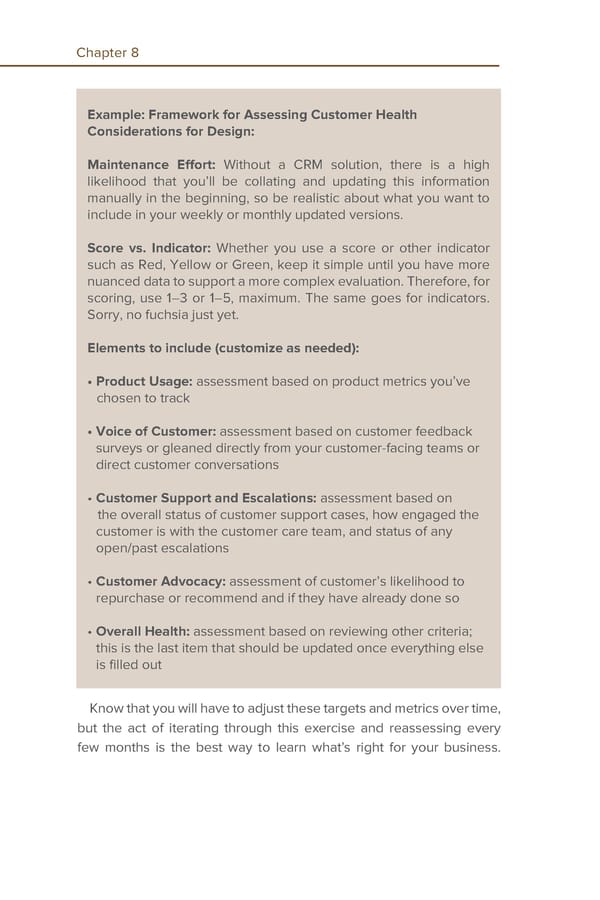Chapter 8 Example: Framework for Assessing Customer Health Considerations for Design: Maintenance Effort: Without a CRM solution, there is a high likelihood that you’ll be collating and updating this information manually in the beginning, so be realistic about what you want to include in your weekly or monthly updated versions. Score vs. Indicator: Whether you use a score or other indicator such as Red, Yellow or Green, keep it simple until you have more nuanced data to support a more complex evaluation. Therefore, for scoring, use 1–3 or 1–5, maximum. The same goes for indicators. Sorry, no fuchsia just yet. Elements to include (customize as needed): • Product Usage: assessment based on product metrics you’ve chosen to track • Voice of Customer: assessment based on customer feedback surveys or gleaned directly from your customer-facing teams or direct customer conversations • Customer Support and Escalations: assessment based on the overall status of customer support cases, how engaged the customer is with the customer care team, and status of any open/past escalations • Customer Advocacy: assessment of customer’s likelihood to repurchase or recommend and if they have already done so • Overall Health: assessment based on reviewing other criteria; this is the last item that should be updated once everything else is filled out Know that you will have to adjust these targets and metrics over time, but the act of iterating through this exercise and reassessing every few months is the best way to learn what’s right for your business.
 Customer Experience and Success Page 13 Page 15
Customer Experience and Success Page 13 Page 15